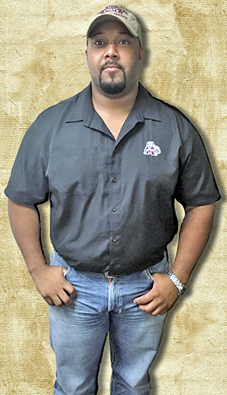What It Means to Be an Extension Professional
Now that you’re a part of the Mississippi State University Extension family, it’s time to understand more about the culture of Extension, specifically from the perspective of being an Extension professional.
This publication will discuss several ways to be professional on the job—whether in the office, at a meeting, or while conducting a site visit on a client’s property. Before we begin, take a minute to think about your personal definition of professionalism.
Which of these statements resonates most with you? Professionalism may be defined as:
- The skill, good judgment, and polite behavior expected from a person trained to do a job well.
- The level of excellence or competence demonstrated by a person in the workplace.
- Getting the job done by any means necessary.
If you selected a or b, you are correct. Professionalism is a determined effort by everyone in the workplace to give their best each and every day. It is the demonstration of behaviors that reflect a high level of performance, a strong work ethic, and a commitment to continuing education. In addition, do not forget the mission, vision, and goals of Extension. Let’s break this down further into five distinct ways to be professional on the job.
- Punctuality and attendance
- Communication
- Presentation and appearance
- Competence and initiative
- Respect
Punctuality and Attendance
An Extension professional does not adhere to a traditional 9 to 5, Monday to Friday routine. To reach the most people and have the greatest impact, Extension professionals typically work many evenings and weekends. This demonstrates flexibility and a willingness to serve our clients in a way that is convenient and meaningful to them, rather than expecting them to come to us on our schedule.
However, this does not mean that, if you work from 8 a.m. to 9 p.m. on a Monday, it is acceptable not to come into work until noon on Tuesday. There may be walk-in clients you need to assist or meetings that you need to attend Tuesday morning. As an Extension professional, you are expected to be on time and present when needed. In return, you will be granted the scheduling flexibility to help balance work and family appropriately. Talk to your supervisor to better understand his or her expectations of your time on the job.
Attendance is key to an Extension professional’s performance and is necessary for continued growth. Poor attendance affects not just your job, but also the jobs of everyone around you. Poor attendance may result in a drop in productivity, extra work for others, and missed opportunities to make connections and build relationships with your colleagues and clients.
There’s a saying common to many businesses that reflects the importance of punctuality, and it also rings true for Extension: “Early is on time; on time is late; and late is unacceptable.” If you find that you’re having trouble managing your time, talk to your mentor, supervisor, or other trusted colleague. Ask them for ideas about how to be better organized and how to prioritize tasks.
Communication
Communication can mean many things to many people. Often, our first thought is verbal communication—how well we can articulate thoughts and ideas to others. However, communication not only includes speaking, but listening, writing, and communicating through body language, too.
Verbal Communication
As a general rule, avoid gossiping, flirting, criticizing, or complaining openly in the workplace. Additionally, use caution when discussing politics, religion, or personal problems with colleagues, volunteers, and clients. If it is not relevant to the job and may potentially create conflict, don’t say it.
Here are some tips for good verbal communication:
- Be clear and concise with your message or questions.
- Think before you speak. Does it really need to be said? Will your words be interpreted in the way you intended?
- Use positive words and phrases.
- Reflect on your conversations by actively listening to what others are saying before forming a response.
- Ask open-ended questions—questions that begin with how, what, or why—to encourage more in-depth conversations and get more meaningful information.
Written Communication
When writing a letter, memo, or email, try to follow the A-B-C rule of thumb. Be ACCURATE with not only identifying the recipient but also the subject of the communication. Be BRIEF and to the point. Don’t waste your time or the recipient’s time with irrelevant information. Finally, be CLEAR about what you are expecting from the person receiving the communication.
Additionally, use proper grammar. If you’re unsure or uncomfortable with your writing, ask someone you trust to read it first and provide input. Carefully proofread, edit, and spell-check, and always rethink your response before hitting send. Most importantly, do not use email if the subject of the communication should be discussed over the phone or in person.
Body Language
When it comes to body language, you can say a lot. Simple things like your posture, length of eye contact, respect for personal space, and facial expressions often carry much more meaning than the words coming out of your mouth. Be cognizant of not only your body language when you communicate, but also the body language of others.
When you’re in the Extension office, you’ll most likely be expected to multitask. Responding to phone calls and emails while interacting with colleagues, volunteers, and walk-in clients can be demanding. However, it is important to remember to focus and be present, especially when face-to-face with others. Positive, professional body language includes turning away from the computer to acknowledge someone, giving him or her your full attention, making direct eye contact, leaning in to appear interested, and nodding occasionally to demonstrate understanding.
Presentation and Appearance
The relationship with local clients is the primary vehicle by which an Extension professional successfully navigates the community he or she serves; because of this, perception and first impressions are very important. Long before your clients get to know you, they make decisions about your abilities and credibility, often solely based on how you’re dressed or what you say the first time you meet them. Additionally, be mindful that, as an Extension professional, you are a direct representation of Mississippi State University and Extension. All MSU employees are held to an acceptable standard of dress.
When you are asked to dress at a certain level of professional dress as an Extension professional, do you know what that means? A typical day in the life of an Extension professional may cover a variety of locations, people, and activities. As such, you may be required to dress differently throughout the day. Always be prepared for the unexpected.
Let’s start with a few examples of unacceptable work wear:
- Cut-off or sleeveless shirts
- Tops with spaghetti straps, tops that expose excessive cleavage or your stomach, and tops that are see-through”
- T-shirts or sweatshirts with alcohol, drugs, or sexual innuendos
- Shorts that are above the thigh
- Leggings in place of pants
- Jeans that are soiled, frayed, or have holes or rips
- Beach style flip-flops
Sweatsuits or athletic gear should also be avoided, unless you’re teaching an exercise workshop or participating in a work-related athletic event.
Extension professional dress can be broken down into three levels: business professional, Extension business professional, and Extension business casual.
Business Professional
This level is for conservative dress. Examples of venues include interviews and formal affairs (banquets, awards programs, and fundraising events) where high-level executives or sponsors attend, and dining and/or seating is formal.

Women
- Business or pant suit
- Blazer and dress slacks
- Dress and jacket
- Dress shoes
Men
- Business suit
- Blazer and dress pants
- Tie
- Dress shoes
Extension Business Professional
This level is semi-conservative and for a more relaxed professional setting, but it is not casual. It is very appropriate for Extension offices and most events.
For both men and women, clean, non-tattered jeans may be acceptable on some days in the office or when attending events, but they are not appropriate on all occasions.

Women
- Dressy sweater or shirt
- Dress pants or khakis
- Moderate length dress or skirt
- Nice shoes
Men
- Collared shirt and/or sweater
- Polo shirt
- Dress pants or khakis
- Dress shoes
- No tie is required
Extension Business Casual
This level is very relaxed and is not to be considered a typical, day-to-day category of dress for the workplace. There are occasional Extension work environments where this dress would be acceptable, such as 4-H camp, visits, field days, farmers markets, and similar events.

Women
- Jeans (non-tattered)
- Shorts (below thigh)
- Capris
- Organizational/ university T-shirts
- Athletic shoes or sandals
Men
- Jeans (non-tattered)
- Shorts (below thigh)
- Organizational/university T-shirts
- Athletic shoes
Competence and Initiative
You were hired as an Extension professional for Mississippi State University because you possess the skills and the knowledge to successfully accomplish the job as described. You are being paid for your expertise and abilities and are expected to perform your job duties in an efficient and proficient manner. Additionally, you are expected to keep your skills current by setting goals and identifying and taking advantage of appropriate professional development opportunities, both inside and outside the organization.
Competence is the convergence of knowledge, skills, and attitude to do a job well. However, you must have initiative, too. Extension professionals must demonstrate a good balance between being open to learning and growing professionally, while being independent enough to do what needs to be done without constant instruction. You should complete duties promptly and professionally, demonstrate responsibility and ownership of your actions, and step up when needed to help others on the job.
Another very important aspect of demonstrating initiative is critical thinking. Extension professionals are tasked with helping clients increase their knowledge, improve their practices, and ultimately change their lives for the better. This means they must be skilled at identifying and solving problems. Critical thinking allows you to ask what the problem is, analyze it and explore possible solutions, identify and rank solutions, select the most appropriate solution, implement it, and, finally, evaluate it.
Respect
Respect is the foundation of workplace success with supervisors, colleagues, and clients, and it involves being considerate of others, valuing differences in people, and understanding conflicting points of view. Demonstrating respect in the workplace is simple, but it sometimes gets lost in the shuffle of deadlines, stress, and anxiety. Make a conscious effort to get to know the people you’ll be working with—your supervisors, colleagues, and clients.
Remember to be courteous to others by encouraging them to share their opinions and ideas, and truly, actively listen to differing points of view without judgment. Don’t be afraid to ask for help from your coworkers, mentors, or supervisors. And above all, be honest—with yourself and others.
Publication 3101 (POD-02-24)
Reviewed by Michael E. Newman, PhD, Lecturer, School of Human Sciences, from an earlier version by Marina Denny, EdD, former Assistant Professor, School of Human Sciences.
The Mississippi State University Extension Service is working to ensure all web content is accessible to all users. If you need assistance accessing any of our content, please email the webteam or call 662-325-2262.


